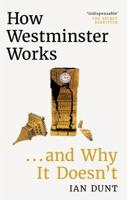Publisher's Synopsis
Why do Democratic political candidates avoid the one issue on which the general public is most in agreement with them? Why do Republicans consistently raise the one issue their advisors urge them to avoid? Why do voters so often exhibit patterns of policy preference vastly different from what analysts and strategists predict? And why do these same voters consistently cast ballots that ensure the continuation of "divided government?"
In The Two Majorities Byron Shafer and William Claggett offer groundbreaking political analysis that resolves many of the seeming contradictions in the contemporary American political scene. Drawing on an unusually large sample of all Americans, taken by the Gallup organization, Shafer and Claggett argue that the recent turbulence in American politics is in some ways superficial. Below the surface, they contend, the political preferences of the American people remain remarkably stable.
Shafer and Claggett find that American public opinion is organized around two clusters of issues-both of which are favored by a majority if voters: social welfare, social insurance, and civil rights, which constitute an economic/welfare factor (associated with Democrats), and cultural values, civil liberties, and foreign relations, a cultural/national factor (associated with Republicans). Provocatively, the authors argue that each party's best strategy for success is not to try to take popular positions on the whole range of issues, but to focus attention on the party's most successful cluster of issues.










